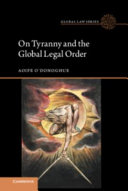Buy Humanizing Higher Education through Innovative Approaches for Teaching and Learning PDF ebook by author Emerald Publishing – published by Emerald Publishing Limited in 2021 and save up to 80% compared to the print version of this textbook. With PDF version of this textbook, not only save you money, you can also highlight, add text, underline add post-it notes, bookmarks to pages, instantly search for the major terms or chapter titles, etc.
You can search our site for other versions of the Humanizing Higher Education through Innovative Approaches for Teaching and Learning PDF ebook. You can also search for others PDF ebooks from publisher Emerald Publishing Limited, as well as from your favorite authors. We have thousands of online textbooks and course materials (mostly in PDF) that you can download immediately after purchase.
Note: e-textBooks do not come with access codes, CDs/DVDs, workbooks, and other supplemental items.
eBook Details:
Full title: Humanizing Higher Education through Innovative Approaches for Teaching and Learning
Edition:
Copyright year: 2021
Publisher: Emerald Publishing Limited
Author: Emerald Publishing
ISBN: 9781839098611, 9781953349415
Format: PDF
Description of Humanizing Higher Education through Innovative Approaches for Teaching and Learning:
This book explains and illustrates each of the requirements for a nontaxable corporate division and the methods for mitigating the tax consequences when those requirements cannot be satisfied.For a variety of reasons, corporations can achieve business efficiencies by dividing into two or more entities. The tax consequences of the division could be that both the corporation and the shareholders must recognize taxable income, which often renders the division unfeasible.In order to neutralize the tax effects of business-motivated decisions to divide the corporation, the tax law provides the means for the division to be accomplished without immediate tax consequences for the corporation and its shareholders. The enabling provisions are necessarily complex so as to prevent their exploitation and bring together several other corporate tax concepts dealing with dividends and reorganizations. Moreover, the rules have often changed.This book explains and illustrates each of the requirements for a nontaxable corporate division and the methods for mitigating the tax consequences when those requirements cannot be satisfied. The author also provides numerous diagrams that summarize actual transactions.





